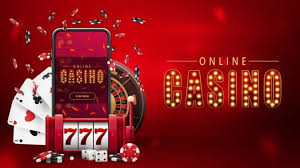
Gaming with Wrapped Tokens: The Future of Blockchain in the Gaming World
In the fast-evolving world of gaming, technological advancements continuously shape the landscape. One such innovation is the emergence of wrapped tokens, which bring considerable potential to the gaming industry. Wrapped tokens, a critical component of the broader decentralized finance (DeFi) ecosystem, act as bridges to integrate various cryptocurrencies into gaming platforms. This article will delve into the exciting world of gaming with wrapped tokens, exploring their functionalities, advantages, and the future they promise for gamers and developers alike. Moreover, we’ll take a closer look at industry leaders like Gaming with Wrapped Tokens winmatch-in.com/about-us/, showcasing how they leverage these technologies to enhance user experience.
What Are Wrapped Tokens?
Wrapped tokens are cryptocurrencies that have been tokenized to represent another asset on a blockchain. For instance, Wrapped Bitcoin (WBTC) allows Bitcoin to be used on the Ethereum network, making it compatible with Ethereum-based decentralized applications (dApps). This is achieved through a process where the original asset is held in custody while an equivalent amount of the wrapped token is minted, enabling seamless interoperability between blockchain networks.
This concept is particularly instrumental in gaming, where interoperability across different platforms can enhance user engagement and liquidity. By utilizing wrapped tokens, gamers can leverage their assets across various games and platforms without losing intrinsic value.
The Role of Wrapped Tokens in Gaming

In traditional gaming, players often find themselves trapped in silos, with in-game currencies and items restricted to a specific game environment. This limitation can hamper player agency and reduce the overall value of their investments. Wrapped tokens help dissolve these barriers, allowing players to utilize their assets across multiple games, making them versatile tools within the gaming ecosystem.
For instance, a player can earn wrapped tokens by participating in one game and then use those tokens to unlock items or currency in another game. This interconnectedness creates a vibrant marketplace where gamers can trade or sell their assets, turning gameplay into a potentially lucrative investment.
Advantages of Using Wrapped Tokens in Gaming
- Interoperability: Wrapped tokens promote seamless cross-platform transactions, enabling users to utilize their assets across different games and platforms.
- Enhanced Liquidity: By incorporating wrapped tokens into their ecosystems, games can provide a marketplace for assets, allowing players to buy, sell, or trade items with ease.
- True Ownership: Wrapped tokens empower players with true ownership of their assets. Through blockchain technology, players can prove ownership, enabling them to transfer, trade, or sell items freely.
- Decentralization: Utilizing wrapped tokens reduces reliance on centralized authorities, making transactions more transparent and secure.
Use Cases of Wrapped Tokens in Gaming
Wrapped tokens have several practical applications within the gaming industry:

- In-Game Currency: Developers can introduce wrapped tokens as a universal currency across games, promoting a fluid ecosystem.
- Reward Systems: Game developers can reward players with wrapped tokens for completing challenges, achieving milestones, or participating in events.
- Cross-Game Trading: Players could trade their in-game items for wrapped tokens, which they could then use across different gaming platforms.
- NFT Integration: Wrapped tokens can be utilized within the growing non-fungible token (NFT) space, allowing players to buy, sell, and trade rare items across various games.
The Future of Gaming with Wrapped Tokens
The future of gaming with wrapped tokens appears promising. As more developers recognize the advantages of blockchain technology, it is likely that wrapped tokens will become an integral part of mainstream gaming. Innovations in wrapped tokens will enhance gameplay experiences, improve asset liquidity, and evolve user engagement.
Moreover, with the rise of Web3 gaming — a decentralized version of gaming enriched by the blockchain — wrapped tokens will likely play a pivotal role in shaping new economic models. By providing gamers greater control over their assets, developers can foster community-driven ecosystems where users are directly rewarded for their contributions.
Conclusion
As the gaming industry continues to evolve, the incorporation of wrapped tokens presents a unique opportunity to enhance user experiences and redefine player interaction. The potential for interoperability, liquidity, and true ownership transforms how players engage with games, paving the way for an exciting future. Embracing these innovations not only benefits gamers but also positions developers at the forefront of a rapidly changing landscape. The exploration of wrapped tokens within gaming is only just beginning, and their impact could be revolutionary.
In conclusion, as we dive deeper into the world of gaming with wrapped tokens, we can expect a more interconnected, engaging, and player-centric ecosystem. The rise of blockchain technology and wrapped tokens promises to reshape how we view gaming, trading, and ownership, ensuring a vibrant future for all stakeholders in the gaming community.





